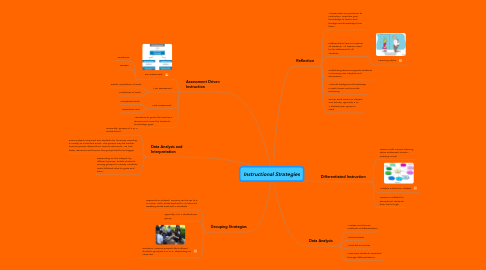Instructional Strategies
par Bryan Kolasinski


1. Grouping Strategies
1.1. Depends on subject: Science can be up to 6 or more, Math works best with 4 or less and Reading works best with 4 students
1.2. Typically, 3 to 4 students per group
1.3. Evidence: Science projects that utilized students grouped in 5 or 6, depending on class size
2. Data Analysis and Interpretation
2.1. Generally: groups of 3 or 4 worked best
2.2. Some subjects required less students for focusing: Reading is mostly an individual event. The groups may be smaller. Science groups depends on science resources. We had fewer resources and hence, the groups had to be bigger
2.3. Depending on the subject, try different groups. Rotate students among groups for variety. Students need different roles to grow and learn.
3. Assessment Driven Instruction
3.1. Pre assessment
3.1.1. Questions
3.1.2. Quizzes
3.2. Mid assessment
3.2.1. Partial completion of work
3.2.2. Milestones of work
3.3. Post assessment
3.3.1. Completed work
3.3.2. Objectives met
3.4. Assessments guide the teacher's lessons and cover the student's knowledge gaps
4. Differentiated Instruction
4.1. Lessons with various learning styles addressed: kinetic, auditory, visual
4.2. Multiple Instruction utilized
4.3. Lessons modified for exceptional students from low to high
5. Data Analysis
5.1. Analyze and discuss methods of differentiation
5.2. What worked?
5.3. What did not work?
5.4. How were students impacted through differentiation?
6. Reflection
6.1. Assessments are guidance to instruction. Teachers gain knowledge of lesson and background knowledge from them.
6.2. Differentiated lessons capture all students. All lessons need to be addressed to all students.
6.2.1. Learning Styles
